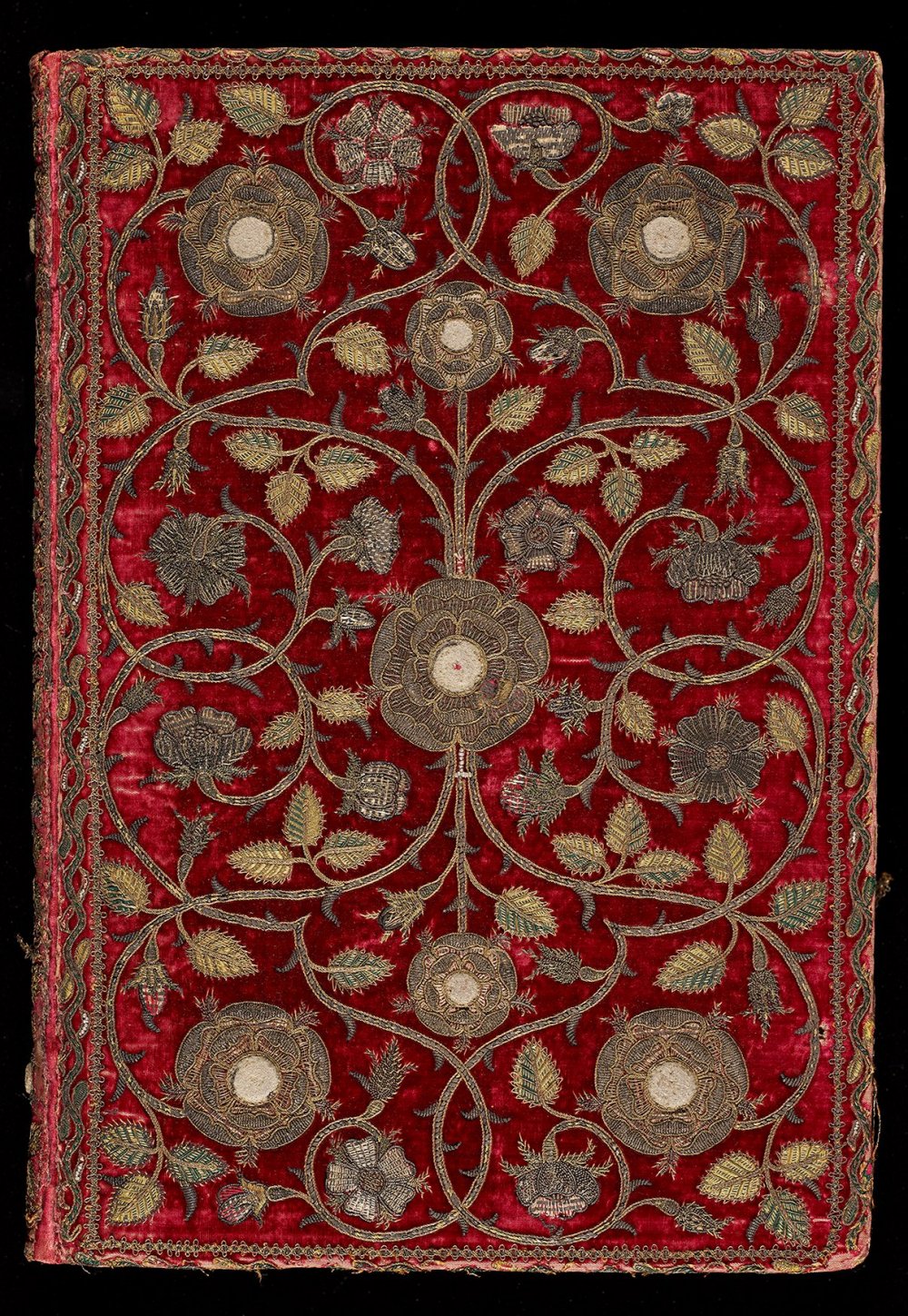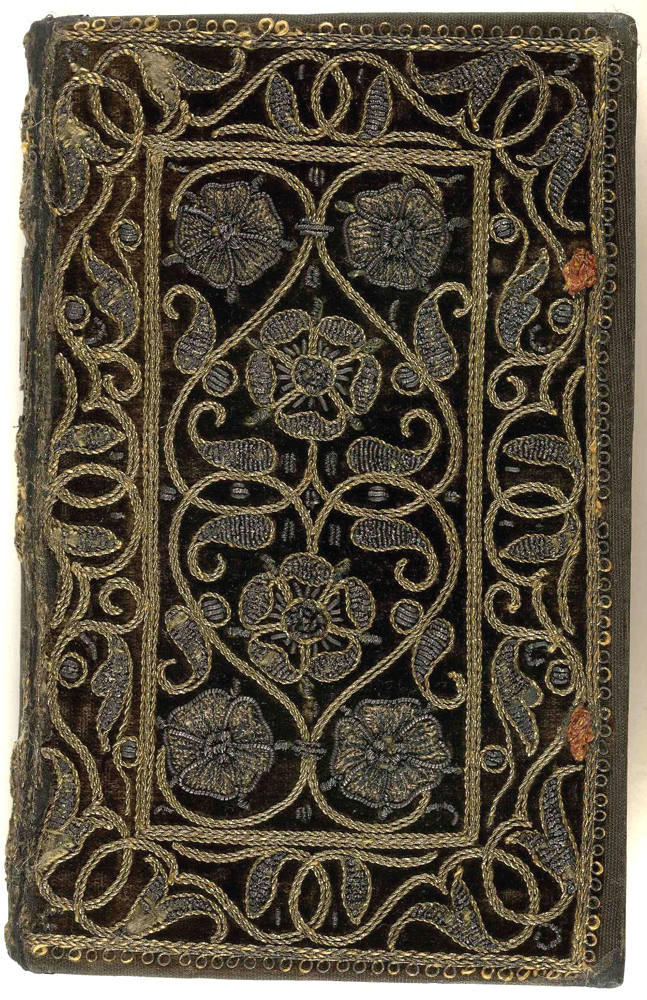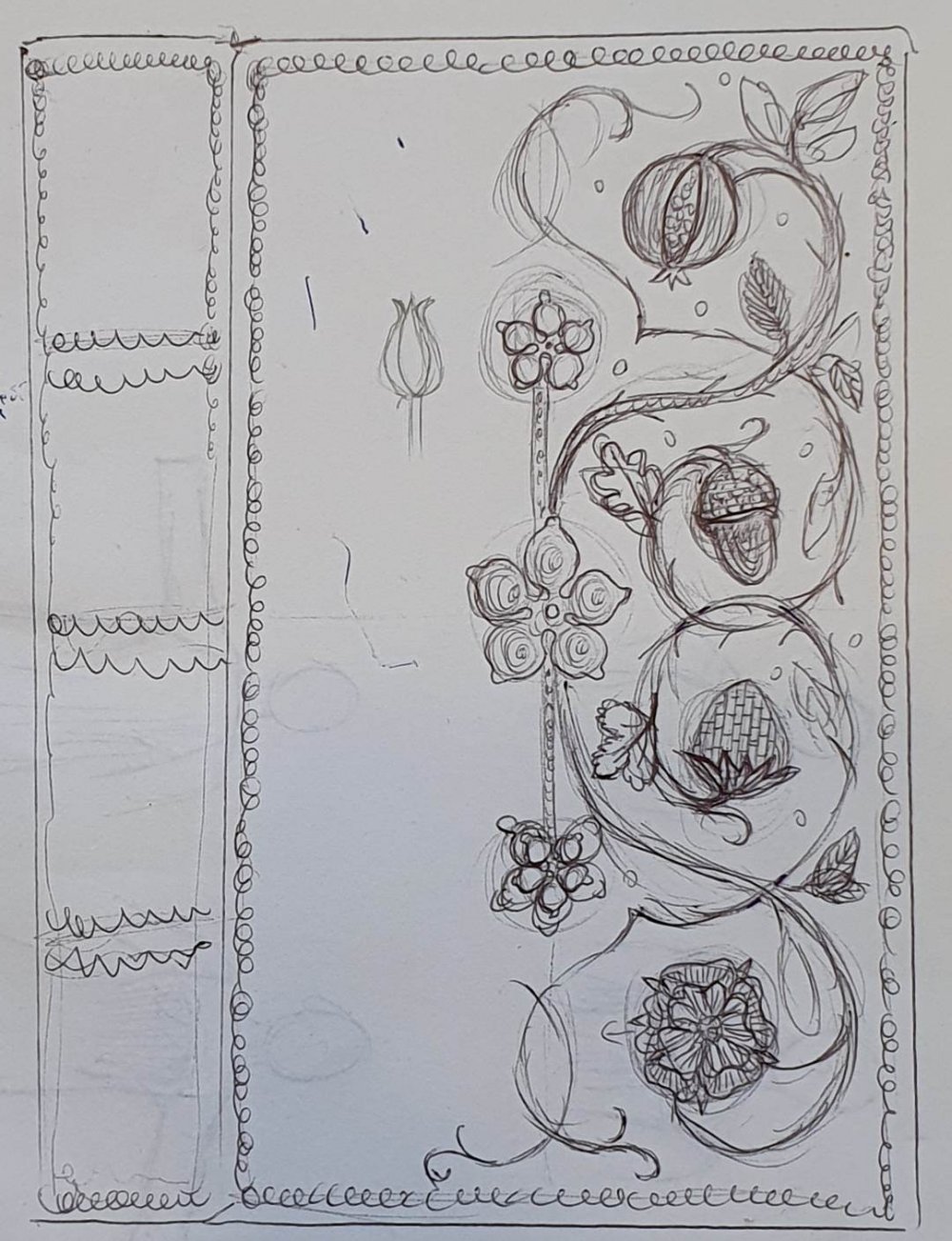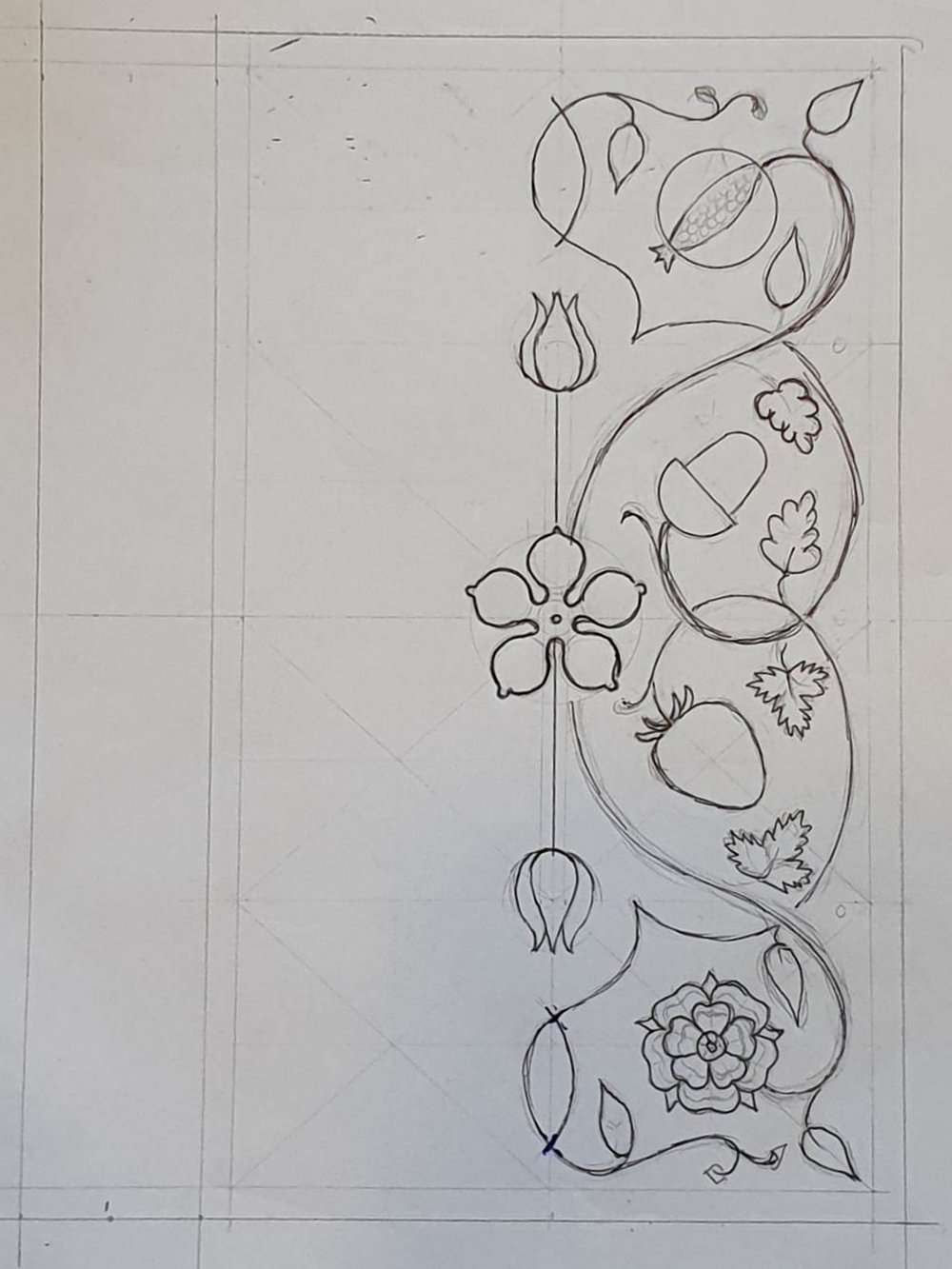A bookcover worked in gold, silk and pearls on red velvet, in the style of the late 16th century.
Embroidered book covers or bookbindings were common in the Tudor and Elizabethan times and many examples exist from this period (Digby, 1963). I had always admired goldwork and this seemed like a good project to try my hand – a cover for an illuminated set of gospels, received as a gift some years ago.

The extant examples show that the binding was embroidered and then bound into the book with the cover. Since my book is already bound, I designed the piece as a slip-cover, to mimic this binding process.
Research and Design
According to Synge (1982), embroidered bookbindings were mostly small in size and formal in design. Red velvet was the most common ground, worked with metal threads and sometimes seed pearls or applied slips, although silk and silver-gilt threads on silk ground is also known (Bridgeman & Drury 1978).
The design is inspired by a bible cover made for Queen Elizabeth I, which features scrolling stems of roses and leaves. Similar scrolling foliate designs can be seen on other Elizabethan embroidered bookbindings, such the example below from the British Library. This piece also shows an edge worked in looped gold braid.
Embroidered bindings might also be decorated with metal mounts, which reduced wear on the fabric.

Source: Bodleian Library

Source: British Library

Source: British Library
I have used the basic design of interlaced scrolling stems and flowers, as can be seen in the original, but simplified it to fit my much smaller volume.
In place of the original Tudor roses and eglantines, I have used a variety of motifs – rose, strawberry, acorn, and pomegranate. These motifs, and their variety within the one design, were common in contemporary embroideries and gave me the chance to try out a number of goldwork techniques and textures. The central cinquefoil is not common in Elizabethan embroidery, but it is the main charge of my device, as the rose was the badge of Elizabeth.
Construction
I measure up the book and made a pattern for the slip cover, then tried this in scrap fabric. Once I knew it would fit, I drew up the design for the front cover and selected my materials.
Because this was my first attempt at goldwork, I made up a quick test piece using the same velvet to try out my materials and the new techniques. Most worked well, but not all – I wasn’t happy with the green silk and the small cinquefoils were not going to work, so I simplified the pattern.



Velvet crushes badly and lacks strength, so I mounted the red silk velvet on scrap cotton, machine sewing the edges and cutting the cotton away behind the velvet. I stretched the fabric into a slate frame, whipping all around for even tension – the first time I had used such a frame.
I transferred the basic design using the prick-and-pounce method, then went over the lines with a fine paintbrush and gouache. In order to to prevent the pile showing through the threads and provide a raised effect, I appliquéd felt shapes onto the velvet, coloured to match the embroidery.

I worked the cinquefoil and buds in couched jap, the roses and pomegranates in couched gold twist, with outlines in fine gold cord. I worked the acorns and strawberries in Or Nué – in coloured silk over flat gold passing.
The main branches are couched small pearls, outlined with couched fine cord. I initially used pearl beads here and on the roses (you can see them in the part done picture), but then replaced these with real seed pearls.
The scrolling lines and are pearl purl (slightly stretched), couched in silk. I used the same to outline the strawberry and add the calyx. The leaves are small pieces of smooth purl, sewn down like beads, as are the stamens on the pomegranate. Gold filled spangles add yet more glitter.
The border is worked in braidstitch, with gold twist – a very effective result, but so slow to work! I also outlined the back in braidstitch and used it to decorate the spine. To decorate the back cover, and prevent the embroidery from damage, I sewed on gold plated mounts, with small pearls.

Afterthought
If I was doing this piece again, I would use much finer passing thread (jap) for the main elements – this gold was a gift, but too large for the scale.
I learned a great deal doing this project about the different materials and techniques, which stood me in good stead for many future projects, such as the Company Banner. And it won the Goldwork competition set by the Worshipful Company of Broderers of Lochac.

